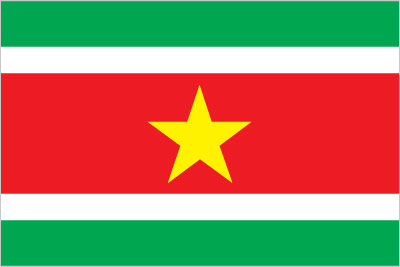
The economy is dominated by the mining industry, with exports of alumina, gold, and oil accounting for about 85% of exports and 25% of government revenues, making the economy highly vulnerable to mineral price volatility. Economic growth has remained at about 4-5% per year in 2010-13, but the government's budget was strained by high inflation in 2010. In January 2011, the government devalued the currency by 20% and raised taxes to reduce the budget deficit. As a result of these measures, inflation has receded to about 4% in 2013. Suriname's economic prospects for the medium term will depend on continued commitment to responsible monetary and fiscal policies and to the introduction of structural reforms to liberalize markets and promote competition. The government's reliance on revenue from extractive industries will temper Suriname's economic outlook, especially if gold prices continue their downward trend.
$7.12 billion (2013 est.)
country comparison to the world: 161
$6.801 billion (2012 est.)
$6.492 billion (2011 est.)
4.7% (2013 est.)
country comparison to the world: 62
4.8% (2012 est.)
4.7% (2011 est.)
$12,900 (2013 est.)
country comparison to the world: 101
$12,500 (2012 est.)
$12,100 (2011 est.)
agriculture: 8.9%
industry: 36.6%
services: 54.5% (2013 est.)
70% (2002 est.)
4.2% (2013 est.)
country comparison to the world: 141
5% (2012 est.)
165,600 (2007)
country comparison to the world: 176
agriculture: 8%
industry: 14%
services: 78% (2004)
9% (2008)
country comparison to the world: 100 12.1% (2006)
bauxite and gold mining, alumina production; oil, lumbering, food processing, fishing
4% (2013 est.)
country comparison to the world: 74